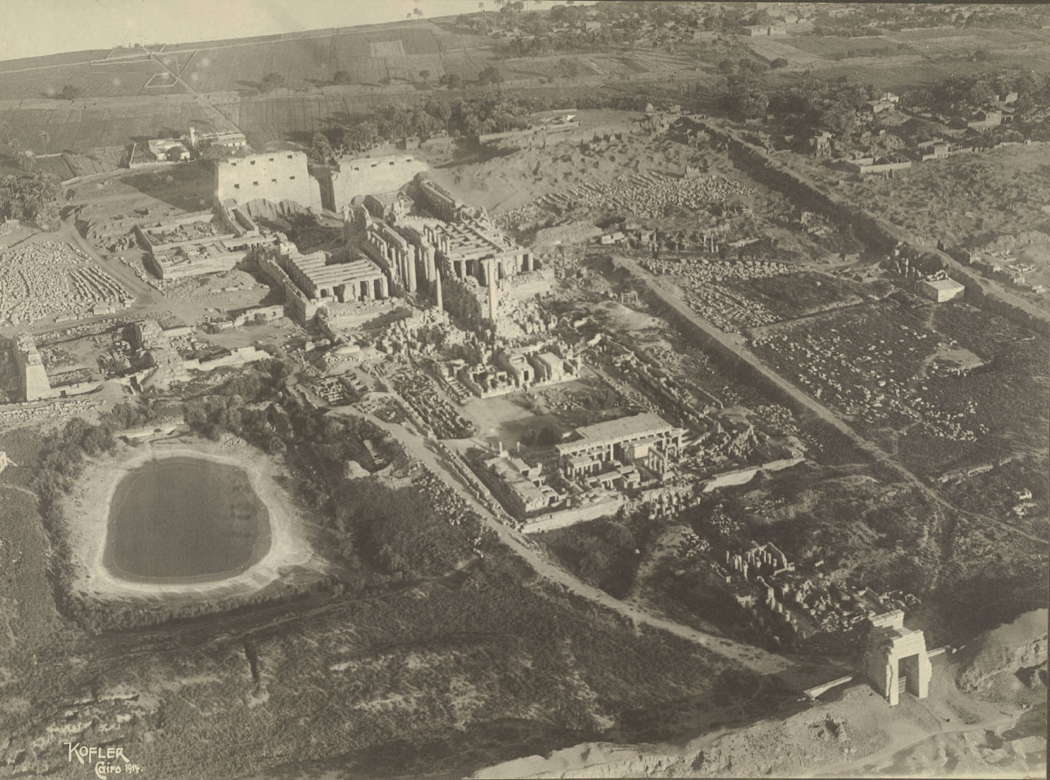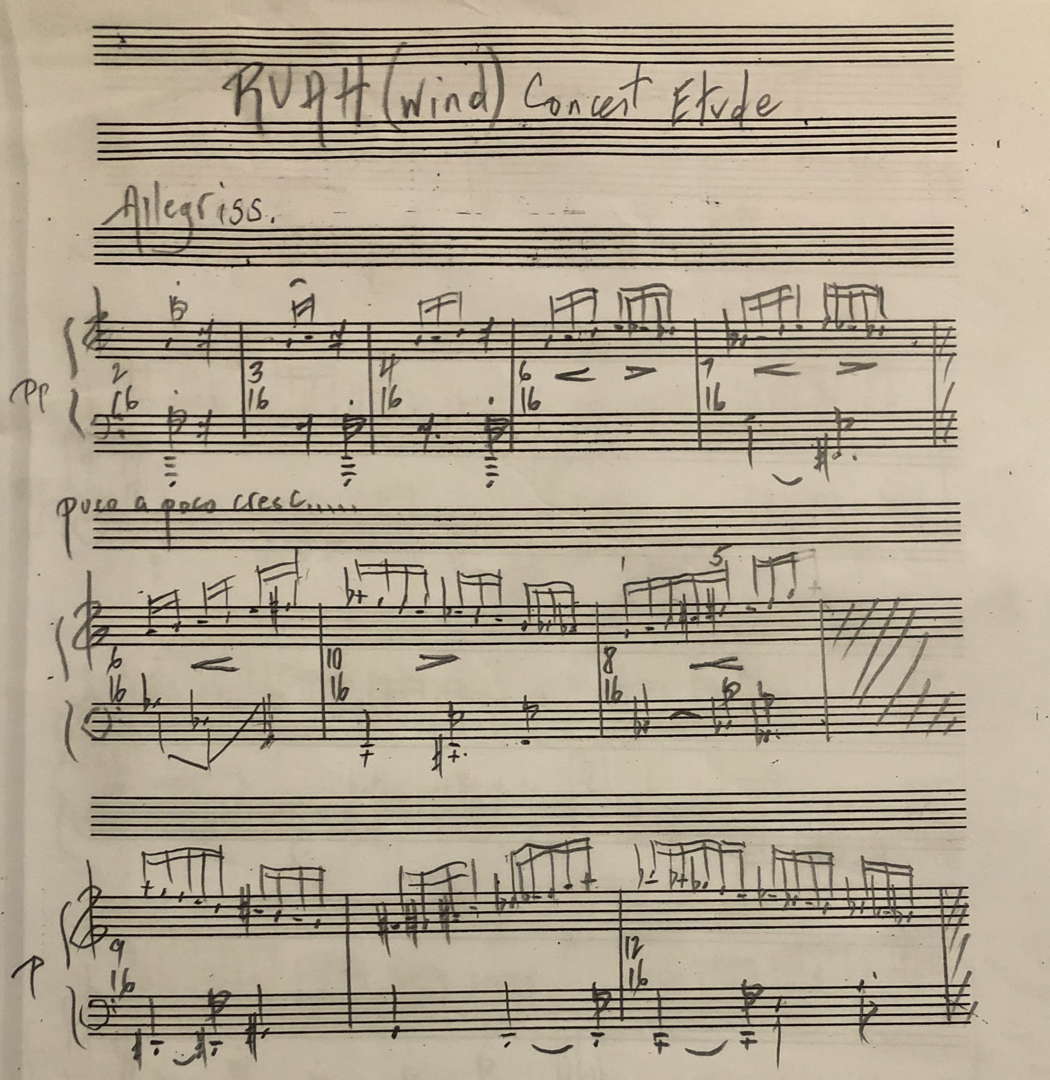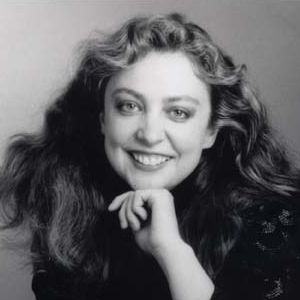 ECHOES OF OBLIVION: Between August 2022 and May 2023, Robert McCarney's regular series featured little-known twentieth century classical composers.
ECHOES OF OBLIVION: Between August 2022 and May 2023, Robert McCarney's regular series featured little-known twentieth century classical composers.
MUSIC AS A FORM OF MAGIC

Larry Sitsky: Late Piano Pieces - Second Series 2022-2023
Larry Sitsky wrote, in an e-mail to the author:
I have been producing a string of short piano pieces, which are curious and cryptic: I am not sure that I like them, or even understand them. But I finally understand where the late Liszt pieces came from: it seems to be a product of old age and contain a sense of objectivity and impersonality about them.
Introduction
Let us believe for a brief moment that Music is a form of Magic. Then a musician might be considered a Magician. There was a time when the Magus was considered an especially wise man, equal of philosopher and poet. By a stretch then a musician might be considered fit in that high company.
Music would then not be mere acoustic wall paper (as R Murray Schafer often deplored). Music would be a passage towards wisdom, towards magic, towards enchantment, towards G-d. It would not be merely the accompaniment of lustful images or sweaty frictions. Music would reach some other field of the Mind.
If one accepts such a stream of pseudo-syllogistic thoughts, arguments, implications or intimations, then we must in all honesty consider Larry Sitsky a Musical Magus.
The Russian ancestry, Chinese born, Australian Larry Sitsky is an astounding collection of characters and achievements: pianist, composer, scholar, indefatigable researcher, mentor, and now octogenarian creator of vast and complex music. His most recent book is his final volume in a series about the composer Busoni. Without question he is Australia's foremost composer and has created a giant library of works including the operas/theatrical works:
The Fall of the House of Usher (1965)
Lenz (1970)
Fiery Tales (1975)
Voices in Limbo (1977)
The Golem (1980)
De Profundis (1982)
Three Scenes from Aboriginal Life (1988)
Incidental Music to 'Faust' (1996)
Completion of Busoni's opera 'Dr Faust' (2007)
Purgatory: Melodrama after Yeats' Play (2015)
Doctor Faustus (2017)
Ecclesiae Gnosticae Catholicae Canon Missae - Words by Aleister Crowley: Incidental music, for piano, participants and congregation (2019)
The pending opera Doctor Faustus (based on Thomas Mann) is in a unique format and awaits release.
Sitsky has been commissioned by a vast array of orchestras, ensembles and musical organizations over a seventy year career. To this must be added a huge list of essays, articles and scholarship on a wide variety of subjects. His book on the Soviet avant-garde composers of the early twentieth century is a major classic in its field.
Most amazingly, over the last twenty years, Sitsky has produced a series of major works for piano:
The Way of The Seeker (2004)
The Golden Dawn: A Suite For Solo Piano In Seven Movements (2009)
Dimensions Of Night (2010)
Sonata #2 (2011)
Sonata #3 Comprising The 'Sonatina Seconda' And The 'Birth-Ceuse' (2012)
Concerto #3 For Solo Piano Without Orchestra: Apocryphon Of Initiation (2019)
These have been performed by some of the best pianists in the world (like the great Michael Kieran Harvey). This is a musical fluorescence that reminds one of the later life and achievement of Havergal Brian. And these works, which would be more than enough for other composers, are but a fraction of his creative output these last two decades. And last year he signed a contract to produce a Concerto for Oboe and Orchestra for the Tasmanian Symphony Orchestra.
Sitsky's imagination ranges over the whole field of human thought and experience and with especial emphasis on the magical, mystical and occult. Sitsky evidently believes that there are Higher Realms than what our day-to-day minds perceive and that Music is a gateway to them. By suggestion, intimation and evocation he draws the dull mind to those Higher Realms. And above all, his belief is strong that such understanding is the birthright of all.
Comment on notation of accidentals in Sitsky's music: Though not indicated in this score, Larry Sitsky's usual method is to allow accidentals to apply only to the pitch they stand to the left of. This removes the need for natural signs, though some players find it difficult to read. The method dates at least back to Ferruccio Busoni.
Note on dedications: These works are often dedicated to various musicians, scholars, intellectuals, colleagues and friends. I have omitted their names out of respect for their privacy.
[Composer's Note: These are separate pieces. Not a unified cycle.]
Having set the stage, let us turn to these recent pieces for solo piano and consider their nature, sources of inspiration and character.

Abyss (LH alone)
(no date)
Turbulent, Rhapsodic
Using the lowest region of the piano and with 'molto pedale' the composition uses chords derived from hand positions on the 5/7 keyboard (number of white and black keys per octave) to create the outset of harmony. However, having established this unstable basis, large cumulative chords, quartal chords, simple octaves and triads are combined to create an even further degree of tonal instability since our ears are accustomed to certain sounds (like a B flat major chord) but only in (or under) certain relationships. Here the relationships are torn apart at the piano and cause a dislocation for the listener's expectations. But, like the Waters of the Deep (Genesis) it is from these components that reality is made.

Omayn (Amen)
(no date)
Incantato
This is a three-fold amen based on a chant-like melody followed by two bitonal cadential chords. The melody begins in an E Phrygian mode, but soon departs and moves freely to other tonal implications while still outlining the basic tonal centre of E. The close is more active outline harmonies, leading to thicker final cadence chords that speak of safety in finality.

Megiddo (RH alone)
(no date)
Misterioso
An example of a somewhat rare piano composition for the Right Hand alone. Played in the highest reaches of the piano's range, this music floats far above the realities of the world. Megiddo is a site in the Holy Land best known as an important trade route and as a place of battles. It appears in the Book of Revelations and from this place name comes our word 'Armageddon'.

Sheol
(no date)
Mistily, Shadowy,
without too much colour.
Sluggishly flowing
[Composer's Note: Shoel is a place of shifting shadows and half-light.]
'Sheol' is the underworld in Hebrew lore and according to the Jewish Encyclopedia 'It connotes the place where those that had died were believed to be congregated.' According to another source 'Shoel' is mentioned sixty-six times in the Bible - a number of some considerable significance.
Sitsky creates a shifting vagueness and very evident disquiet by several means. The theme leaps large intervals which destabilizes the line. The meters vary and are mostly uneven lengths - 5/8 etc. But an interesting device is the use of canons - first in unison, then in thirds, then in triads. Someone once mentioned that the canon can be considered a form of shadow following a human. Such are the Shades of the Dead following the footsteps of the Living. The very opening bars return at the close to remind us of the Eternity of the state in the Underworld.

Bāt-Kol (The Divine Voice)
30 August 2022
Quasi-Recit. [?], portato
A heavenly or divine voice which proclaims God's will or judgment, His deeds and His commandments to individuals or to a number of persons, to rulers, communities, and even to whole nations. The meaning of the word is 'sound', 'resonance'. - Jewish Encyclopaedia
And further from the same entry:
... but it means the reverberation or hum, caused by the motion of all things, which fills the whole world and which accompanies the human voice and every other sound.
To create the effect of this reverberation behind the Voice, Sitsky directs the player to silently depress the lowest chromatic notes on the piano and hold them throughout the movement. As the Voice intones its message, the harmonics reverberate in sympathy to create a haze of sound.
The melody itself is like a chant that moves in and around certain pitches in a small range, but the changes in pitch (D flat here, D natural there) result in a modern version of Eastern chant. Gradually building up rhythmic complexity and range, the right hand has most of the work to create the musical effect. At the end it leads us upward into higher realms, only to be answered by five strokes from below.

Books of Heaven
16 September 2022
Moderato, brooding
The Books of Heaven are mentioned in the Bible as 'The Book of Life', 'The Book of Remembrance' and 'The Book of Sins'.
https://bibleask.org/what-are-the-heavenly-books-according-to-the-bible/
These (and some others mentioned) are books connected with G-d in the Jewish canon:
https://endtimeheadlines.org/2020/06/5-books-in-heaven-you-may-not-have-known-about/
https://shepherdthoughts.com/baptistchurchny/the-books-in-heaven/
By the way, one should always remember that Larry Sitsky often draws thematic and motivic material from letters and letter values. In spiritual studies this is known as Gematria. Schumann made use of this device - ABEGG Variations, for example - but Sitsky is often much more thorough-going. This makes it difficult to disentangle motifs and the author demurs to investigate this work too deeply on this matter. For a detailed study of such devices see: Dr Judith Crispin's book The Esoteric Musical Tradition of Ferruccio Busoni & its Reinvigoration in the Music of Larry Sitsky. The operas Doktor Faust and The Golem (2007)

Breast-Plate of Judgement
30 September 2022
Con bravura
[Composer's Note: Worn by High Priest; 12 precious stones, 3 rows of 4. Hence the basis of the piece, alternating fours and threes.]
The composer's note explains the structure of the work. Important as well is the use of chromatic notes in relation to passages using whole tone scales along with sevenths, which all goes to create a strenuous, but altered sense of harmony and melody. One does not quite know what to expect. This movement is powerful and demanding: just like the Judgments of G-d.

The Dead Sea
9 October 2022
RH Pedal down throughout. The whole piece slow, soft, mysterious
This work is based on the principle of 'accumulation.' To begin, a series of intervals arises from the bass and accumulates a sense of vast distances in a vague reality. Thereafter, phrases of repeated chords accumulate chord-tone members until maximal tension is achieved. After a climax of cluster chords, a chant-like melody combines into a series of thick and ineffable chords. The opening music then reverses the process and devolves into obscure silence.

The Witch of Endor
24 October 2022
Molto Ritmico; as a rule, accent first beat of every bar.
Who was the Witch of Endor? Was she a 'ventriloquist' or a necromancer when she summoned the 'spirit' (?) of the Prophet Samuel for Saul? (First Book of Samuel). I think Sitsky opts for the necromancy of the tale and creates a swirling and virtuoso ferment.

Shemiramot
7 November 2022
Moderato, ceremonially & with great dignity
[Composer's Note: The musician who provided music when the Ark was moved to Zion.]
Sitsky's interest in arcane lore is evident in this composition's note; The Ark, being the Ark of the Covenant. The composition begins with a minor second that plays as if it were a small drum and the Shofar sounds its call (similar to the theme in the Shofar movement below), until finally a single voice sings its simple melody.

The Crusader Castle at Sidon
15 November 2022
In Lebanon is a castle built by Crusaders over seven hundred years ago. Sitsky begins the piece with a chant-like melody in fifths which then accumulates pitches until a series of more complex chords - still with fifths above - continues the chant. The pianist's left hand provides trombone sonorities and some percussive effects building to a complex passage of a low brass tune surrounded by drums and fifes. But like the usual march it fades into the distance, only to close with an ascending pile of fifths that rise upwards as if to Heaven.

Larry Sitsky: The Crusader Castle at Sidon, composer's manuscript. © Larry Sitsky

Drums
18 November 2022
There is no clear evidence that this piece is associated with any Hebraic history or literature, but for those who might believe drums are nonexistent in Jewish history, consider the events of Moses' parting of the Red Sea.
Exodus 15:20: And Miriam the prophetess, the sister of Aaron, took a timbrel in her hand; and all the women went out after her with timbrels and with dances. - Jewish Women's Archive
Many years ago I heard a sermon in which the Protestant Minister pointed out the pure hope that was involved in the Jewish People fleeing Egypt, for they brought drums. The Minster said:
Even in the midst of terrible troubles they prepared to celebrate success and safety. They had fled from Egypt, but they had brought timbrels (drums) along!
The music is played on the wood of the piano. There are no sounds produced with the keyboard itself. Players are to play in various ways, in specific rhythms only.

Kinerot (Harps) Hommage to Ferruccio Busoni
21 November 2022
Moderato, lirico
Larry Sitsky has been deeply involved with the music and achievement of Busoni his whole long life. His contribution to Busoni studies is beyond calculation. Books, articles, performances, recordings and frequent use of thematic material, musical suggestions - figurations, for example - and even just straightforward mood inspired by Busoni are everywhere in Sitsky's work. According to the excellent book by Dr Judith Crispin, Sitsky - through his teacher Egon Petri - is a part of the secret tradition of Busoni's creativity.

Song of Moses on Mount Nebo
28 November 2022
Very free, chant-like, regretful
A sombre chant melody unfolds and is decorated with crush notes and supported by held tones in the bass – so that overtones are sympathetically activated. Inspired by the lamentation of Moses in Deuteronomy 32, I do not know how closely Sitsky follows the text (and which text he might use, of course), but here is a free melody design that applies a transformed version of Middle Eastern melodic technique. The result is potent and cabbalistic.

Hadād: God of Thunder - Homage to Henry Cowell
1 December 2022
Moderato
It is generally considered that the American composer Henry Cowell (1897-1965) invented the cluster chord for the piano. However, the idea was certainly in the air - Alkan had clusters in a piece, and in Canada, J Humphrey Anger wrote a piece Tintamarre, Morceau de salon published in 1911 with extensive clusters. Be that as it may, Sitsky here takes up the cluster to create great boomings and roarings of sound that arise in distant rumblings and arrive with cataclysmic fury. Such is the way of the Thunder G-d.

The Wings of Hermes
24 December 2022
Rapid, toccata-like
This truly is a toccata in full flight. Hermes, or Mercury, the Messenger of the Olympian gods who careens wildly upon missions set by Zeus in this explosive outward thrust of a composition tears through Space and Time on his appointed task. But Hermes is more than that, not just a mailman for the gods. The madcap antiquarian Godfrey Higgins suggested that:
With a view to the accomplishment of these ends, therefore, [Ammonius Saccus] maintained, that divine wisdom had been first brought to light and nurtured among the people of the East by Hermes, Zoroaster, and other great and sacred characters ...
And so this toccata tells us much more that some brief order from Olympus. He is the bringer of enlightenment.

The Pools of Solomon
31 December 2022
(i) Calmo
(ii) Moderato
(iii) A Little more rugged than (i) or (ii) - Moderato quasi Maestoso
This rather large composition - compared with others in this group - is divided into three sections to evoke the three Pools of Solomon. These are ancient reservoirs that once provided water for Jerusalem, though now they seem in some state of disrepair. They are not as old as the historic Solomon, but date perhaps from Roman times and somewhat before.
The composition is divided into three sections (for the three pools) and the first begins with a high bell-like ostinato beneath which a melody sings out in late Romantic piano performance manner: the melody floats away from the beat, but is here written out exactly. This used to be called 'breaking of the hands', though I hope someone has a better term that is less violent!
The second section makes extended use of a very typical Busoni method of chains of triads that are not related to usual keys and so cause a dislocation of the harmonic sense.
The third pool's music is a series of low brass chords surrounded by bell-like chords in opposite registers. The sound floats upon its own waters.

Nahum (Consolation)
2 January 2023
Mesto
Nahum was a minor prophet - are any of them really 'minor'? - who wrote of the ending of the Assyrian Empire. While this might seem a strange matter to consider a 'consolation', it represents the downfall of the mighty, belligerent and vainglorious empire at the hand of G-d. Nahum's name means 'comforter' and to mark this and other aspects, Sitsky has made use of a theme from Franz Liszt's Consolation in D flat major. The music abounds in bitonal events, but of such gentle manner as to truly be a solace.

Nephilim
4 January 2023
Rhetorical style eighth notes, not necessarily even.
[Composer's note: This piece is all in double octaves, hence the notation of +8va in RH & +8vb in LH. The piece proceeds in waves & is generally fast & tumultuous. The asymmetry needs to be marked by accents on downbeats.]
The obscure creatures called Nephilim seem to haunt our minds, though we do not quite know it. A detailed online investigation of these giants leads to a vast library of conjecture, speculation and conspiratorial madness. Larry Sitsky is undoubtedly aware of all of this.
This is a titanic composition if played in double octaves as called for - though some might wish to opt out: they should not - and equals Liszt's Orage, Chopin's B minor Étude (Op 25) and Dreyschock's Left Hand octave 'magnificatory' amplification of Chopin's 'Revolutionary' Etude (Op 10). Virtuosi - or Giants - only need apply.

Shofar
17 January 2023
Very free
[Composer's Note: Shofar is a ram's horn, used as a trumpet.]
I encourage people to investigate the impressive and moving uses of the Shofar in Jewish religious practice.
Sitsky, of course, uses the symbolism of the shofar as an expression of his own ancestry and summons this symbolism through a call made up of a few notes (as befits this natural horn's nature). The calls resonate forth over a droning accompaniment of freely repeated and varied material.

Karnak
19 January 2023
Glassy, favouring the RH
Karnak is the great temple complex in Egypt with construction beginning over three thousand years ago. Far to the south along the Nile, the scope of this site is almost unbelievable. How does one conjure such a place, filled with millennia of spiritual intentions?
Sitsky creates a melody played by both hands - for the most part in unison - at opposite ends of the keyboard. The very distance of the pitches diminishes the integration of the unison and stretches our ears in unusual ways, just as the spiritual search stretches our 'selves' in unusual ways.

1914 photo by Kofler of the temple complex at Karnak
(Cornell University Library, CC2, resized)

Kirbet Kumran (The Ruins of Qumzan)
28 January 2023
Harsh & rugged Moderato
The performance directions amply indicate the landscape around this ancient (probably) Essene community in the Middle East. Nearby was the site of a cave containing what has come to be widely known as The Dead Sea Scrolls. Ruins of the buildings are under archeological study.
https://www.biblegateway.com/resources/encyclopedia-of-the-bible/Khirbet-Qumran
How then to make a composition that conjures up such a place? There seems to be an emphasis in the augmented fourth and the right and left hand are dislocated by an eighth note much of the time. Dissonant intervals abound and there are sudden outbursts of sixteenth notes which are like glass splinters through your boots. Most amazingly, at the climactic point, Sitsky quotes from Scriabin. I leave others to discover which piece by that mystic Russian composer is intended and I also leave to others to ponder this unusual allusion and its possible import. The music ends 'Maestoso and fortissimo' as if one were scorched in the desert heat and blazing Sun.

Lamentation
29 January 2023
[Composer's Note: Press silently: cluster chord [in bass] catch on Ped. III, hold down throughout piece. RH melody is always loud enough to bring out overtones. Touch is non-legato, percussive.]
Another chant-like work with a resonating chord held by the middle pedal, which allows other pitches to be dry, or disconnected as required. Drums interrupt and the melody circles around a few notes using a few intervals. That is until melody notes become chords and a climax is reached. The music ends with an arpeggiated sonority that repeats, fades and slows till silence ensues.

Oath
30 January 2023
[Composer's Note: This little bitonal piece should be played with great dignity & solemnity.]
Parallel chords in each hand operate in different realms often separated by a minor second. The result is not harsh (as one might expect), but serious, ominous and profound.

The Tears of Jeremiah
9 February 2023
Free, rhapsodic, molto esps. & mesto
Jeremiah being one of the Major Prophets of The Bible, he is respected in Judaism, Christianity and Islam. As considered the author of The Book of Lamentations (among others) his tears have resounded down the ages. Sitsky's composition is a recitative with the occasional tolling of bells in the depths of the piano's range. A fast scalar passage leads to a painful soprano outburst that dies down into abject and pitiable silence.

Adonai (Prayer: Tehina)
12 February 2023
Very intense RH, incantatory style
The word 'Adonai' is the Hebrew name for G-d and I admit I have trouble following the logic since the music begins with an augmented fourth or tritone which is often correlated with the Devil. I leave the (perhaps Gnostical) implications of this to others. Again, there is a mournful solo recitative melody over deep - and in this case, triadic - chords. The melody reaches its stopping point and then it is as if a procession of brass instruments fades away in the distance.

The Wilderness of Zin
23 February 2023
Tempo Moderato
I have always wondered at the Promised Land and it's rather desert-like nature. Yet, the desert is often considered the homeland of great wisdom. (Consider the sources of Islam in such environments, the creating of the civilizations of Egypt and Sumeria in lands of arid nature, of the choice of the land around the Great Salt Lake in Utah by the Mormons, the planet described in the Herbert novel Dune, and so on.) Yet, it seems a paltry gift. Forgive me for my meagre opinion. The locale evoked in this composition is sometimes considered that place in the southern portion of the state of Israel.
The music begins in the lower reaches of the piano with pizzicato effects with pitch collections derived from the contrast of white and black keys (all black keys in one hand, white in the other), which gradually evolves into a combinatory ostinato. Then enters a baritone melody marked 'declamato' which is striking in its strength, turning to vehemence. The coda is a fearsome parade of thick and 'Grande' bitonal chords. This is not the desert of mystical peace and visions. Perhaps Sitsky ponders struggles in the wasteland ...

Karkara – Sacred Dance
1 March 2023
Moderato, dignified
I have not been able to ascertain the source for the term 'Karkara' and I wonder if it is a reference to the sacred dances of the mystic philosopher Gurdjieff. I hear a florid and wide ranging chant theme accompanied by drums and the occasional choir of low brass instruments. One of Sitsky's greatest compositional strengths is the elaboration, development and extension of his melodic ideas without degenerating into mechanical subterfuge. The melodies grow and evolve in a remarkable and magical fashion.

Musician of the Temple
5 March 2023
Florid, quasi improvisando
1 Chronicles 25 tells us that King David tasked the Levites to provide music for worship with harps and cymbals. (The Authorized King James Version mentions harps, psalteries and cymbals.) Subsequently music was reduced in emphasis (for a variety or reasons), but I believe Sitsky is considering the earlier practice. This gently flowing composition evokes the ancient enactment.

Ruah (Wind) Concert Etude
23 March 2023
Allegrissimo
The title also implies the Voice of G-d. Likely the most demanding of this group of compositions, the right hand gradually accumulates a rushing of sixteenth notes while a long melody gives some stability. Of course, the winds die away in a reversal and fading away. For the virtuoso only.
The gradually accumulating scale passage is based on the intervallic sequence B C D (minor second, major second) which is answered by E E flat D flat (retrograde inversion). This becomes a central element to which more sixteenths are added before and after this initial motif until the scales sweep like the wind over much of the range of the piano.

Larry Sitsky: Ruah (Wind) Concert Etude, composer's manuscript. © Larry Sitsky

Ghost Dance (after Shaman Wovoka, 1890)
4 April 2023
Dignified, Ritualistic
Considering that most of the works in this group (but not set) are inspired by Jewish history, lore and culture, it is a somewhat of a surprise to see this work inspired by the religious movement of the late nineteenth century in the United States that swept across the First Nation's people and was vigorously stamped out by the American government as what we would call a terrorist cabal. The founder of the movement was Shaman Wovoka.
However, the appearance of this source of inspiration after so much Jewish lore is part of Larry Sitsky's mental outlook: for his mind and heart wander the corridors of the World's Traditions in search of Wisdom and Understanding.
This composition seems designed to contrast bells, the wind and a chant in a gradual accumulation of ideas and interactions. The final section has a melody in simultaneous inversion surrounded by the swirling winds.

Afterword
Having now traversed the music of this recent set of compositions, we have also traversed a large portion of the world and the magical, spiritual and mystical aspects that inspire Larry Sitsky's music and imagination. We have travelled with him through History and the Spirit. This is our good fortune.
Acknowledgments
Use has been made here of a Works List compiled by Larry Sitsky and provided to the author. Information derived therefrom is used with permission. With gratitude.
Copyright © 20 June 2023 the author - published anonymously



